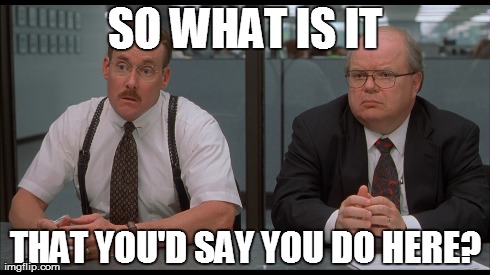B2B is boring.
Ok, I said it.
But it doesn’t have to, or better it shouldn’t, be that way.
From blogs offering “Top 5 success tips for ABM” to white papers citing ground-breaking data for 2023, or even a live conversation you can’t miss about a topic that has already been discussed a couple of dozen times, B2B content and creative is a dystopia of sameness. What we seem to be forgetting is the real purpose behind our content and messaging which is to inspire, delight, inform, and deliver value. In short, if your creative and messaging aren’t fulfilling that purpose then you’re missing a crucial opportunity to connect with prospects and customers.

Just telling them what you do isn’t enough.
With the convergence of B2C and B2B, buyers are not only looking for inspired messaging and creative but an experience that goes along with those. Purchase decisions, and the decision to continue purchasing from your business, are made by human beings longing for a deeper connection.
How can I make a real connection with prospects and customers?
Memorable creative, messaging, and experiences help foster that human connection by:
First, creativity in message and design tends to aid memorability and often helps improve brand loyalty. Working to make customers sticky helps create an emotional bond with them while helping them feel good about their purchase decision. That connective tissue helps make the decision to purchase or stay with a supplier much easier.
Second, great communications tend to deliver differentiation. If we can agree that some B2B brands do a less-than-optimal job today of defining what they do and why they do it, it’s fairly easy to see how doing it right, and uniquely, can help create lasting relationships.
Lastly, if you subscribe to the belief that purchasing in B2B can be as emotional an experience as B2C, then you’ll agree that tapping into your prospects’ values, desires, and aspirations through effective creative and messaging is one way to achieve it.
But, how can it be done?
In a word, courage.
Loosely defined as possessing the mental or moral strength to venture, persevere and withstand danger, fear, or difficulty, courageous creative is what we call great work here at Intelligent Demand.
A mentor of mine once told me you know the work’s good if half the people love it and the other half hate it. I don’t know if that’s truly accurate, but there have been plenty of instances where courage won out over the focus groups and quantitative testing to ensure the great ideas got to market.
One of those instances I recall vividly was the introduction of the all-new Dodge Ram pickup in the mid-90s. You know, the one where they dropped the headlights down to create a “big rig” look? Legend holds that only about half of consumers liked it and the other half, well, you know. That said, the look would prove so successful that it has been mimicked by the other truck manufacturers, it’s on its 5th generation of design now, and the design was so well-regarded that Dodge spun off Ram and created its own brand, Ram Trucks. Courageous? You bet.

Bringing it down to a personal level, one such instance of courage, or stupidity, was when I was working as an account director for a large global agency. The creative director there at the time was cut right out of The Devil Wears Prada. He was my Miranda Priestly and had such an ego and angry disposition, that everyone was afraid to challenge him. In this instance, he was soundly standing behind a bevy of safe ideas that the client seemed lukewarm on at best. Mustering my courage to push beyond the safe, I attempted to convince him we had other, better work that I’d seen and that his creative team wasn’t pushing him hard enough for fear of retribution. And when he wasn’t completely on board, I persuaded him to let me share the work with the client, privately, so that we could get the client’s blessing without risking damage to his rather large ego. A few hours later we’d delighted the client and sold the most risky of our campaign concepts which outperformed the safe work 2-to-1.
So, who’s doing it right?
A lot of folks, but here are a few of my favorites.
This approach was so spot on, it literally made me wonder if Adobe was listening in on all my conversations or reading my email. Adobe has taken its successes in the use of creativity, color, and visual design and applied them more deeply into B2B. It’s because they’re working to make personalized experiences part of everything they do. And, they’re willing to break from the status quo and move away from conventional, lead counting, approaches embracing their brand as a massive lever and differentiator.
While their “Did you mean MailChimp” campaign might be a few years old, it’s still one of the funniest, quirkiest B2B campaigns I can remember. It’s a great example of how B2B brands can use creativity, brand, and courage to connect with customers on a more personal level to build brand affinity.
Their use of color and the thoughtfulness behind their homepage slider had me at hello. I love the way they cycle through the many benefits of their solution without technical speak or jargon. Instead, they deployed a more emotional way of getting to the heart of their customers’ concerns by speaking plainly and empathizing. They’re in their customers’ heads and hearts and they know it.
Summarize this for me.
Ok, if you’ve read this far, perhaps you’re of the belief that differentiating creative and messaging can be a lever for your brand — even in B2B.
Here’s what you can reasonably expect by infusing your campaigns with creativity and compelling messaging.
- Deliver a unique brand voice and personality: Your messaging and creative can help establish a unique brand voice and personality. Just think about all the great and memorable consumer creative you’ve ever seen. It makes the brand sticky and you’re more likely to have a favorable connection with the brand. It works like that in B2B, too.
- Lockdown and emotional connection with your audience: Your messaging can help build an emotional connection with your audience by tapping into their values, desires, and aspirations. Because purchase decisions are still made by human beings with emotional needs (e.g., recognition, a promotion, a bonus, etc.), forging a bond with them is a powerful way to differentiate your solution from your competitors.
- Trust and credibility: Authentic, relevant, compelling, and differentiated messaging and creative is the best way to establish trust and credibility with potential customers. And once you’ve gained their trust, you’re on your way to becoming indispensable.
- Creating brand advocacy: And, once you become indispensable, advocacy is next. One of the most important tools a B2B brand can have is an army of folks willing to stand up and recommend it to others. Trust, credibility, indispensable, advocacy. You’re well on your way to building long-term relationships with your customers.
- Meaningful interactions with your target accounts. Remember, delivering unique creative and messaging can help brands stand out in a crowded marketplace by establishing a unique brand identity, building emotional connections with audiences, and creating memorable and distinctive experiences.
So, if you’re interested in seeing how you can put great creative and messaging to work for your brand, reach out to us at Intelligent Demand where we’re literally creating remarkable creative experiences for our clients every single day.



